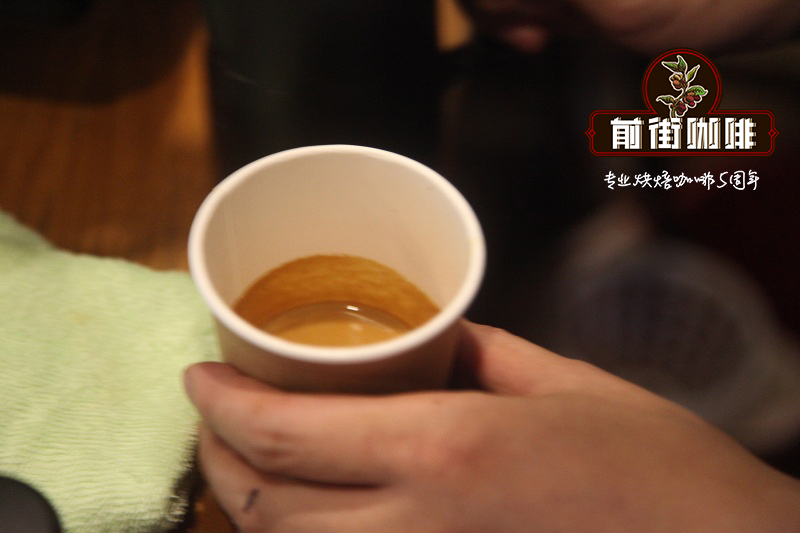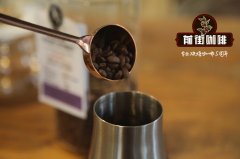How is India Monsooned Malabar Malaba coffee roasted? How do you drink Malaba coffee?

Professional coffee knowledge exchange more coffee bean information please follow the coffee workshop (Wechat official account cafe_style)
On Asian Coffee
Perhaps the first thing that reminds the public is Indonesia's Mantenin.
But in fact, India should be the first country in Asia to grow coffee.
It is said that the coffee tree species in Indonesia was introduced by the Dutch from India in the 17th century.
The famous Indian coffee Malaba
Called monsoon coffee or wind-stained coffee (Monsooned Coffee)
The name comes from MONSOON, which means monsoon.
I heard that it originated from the process of shipping raw coffee beans from India to Europe in the past.
Raw beans are affected by high temperature and moisture in the Indian Ocean.
Cause some changes, including: raw bean volume expansion, color from emerald green to golden yellow, taste mellow, unique taste.
Today, packaging and transportation technology have been improved.
Indian coffee can be quickly transported to consuming countries without dampness.
The point is: what lovers want is the unique taste of wind stains.
Today's wind-stained coffee is processed in the place of origin.
Put the coffee in an open warehouse, hit by the wet monsoon
Keep turning artificially to avoid excessive moisture and mildew.
The wind-soaked process makes the Indian curry taste lower in acidity, higher in sweetness, lower in flavor and rich in taste.
Some people call it "ocean flavor".
Actually look at the beans.
There are four raw beans in the picture, and at the top right is the general fresh washed raw beans.
The color is dark green to emerald green
The lower right way is wind-stained Malaba, the color is light golden yellow.
The two on the left are broken wind stains, Malaba (I don't know if they are poisonous).
Wind-stained Malaba should be regarded as soft beans!?
So try not to bake too long or too deep in the first pot.
It is expected to be put into the pot after the explosion.
The photos do not seem to be baked evenly, and the technology needs to be strengthened!
Visually, about 5-10% of the beans have not exploded yet, but a similar proportion of the beans have begun to approach the second explosion.
It seems to be a challenge to bake evenly!
Interestingly, Malaba's raw beans are about 1.5 times bigger than ordinary raw beans.
But the cooked beans baked are not much bigger than raw beans!
Try it in five days.
After the wind-stained Malaba was ground off, he obviously smelled a fragrance similar to Japanese Xuanmi tea.
The photo is the result of standing for more than 10 seconds after SINGLE SHOT extraction.
More than half a cup of CREMA compared to Brazil's Datehan Saint-Colomba or Costa Rica's multi-tower conquerors.
The amount of CREMA in wind-stained Malaba can only be described as mediocre.
Qianjie coffee: Guangzhou bakery, the store is small but a variety of beans, you can find a variety of unknown beans, but also provide online store services. Https://shop104210103.taobao.com
Important Notice :
前街咖啡 FrontStreet Coffee has moved to new addredd:
FrontStreet Coffee Address: 315,Donghua East Road,GuangZhou
Tel:020 38364473
- Prev

Is Indian Malaba coffee good? what is the price of Indian monsoon Malaba coffee?
Professional coffee knowledge exchange more coffee bean information please follow the coffee workshop (Wechat official account cafe_style) special taste, unique aroma-Indian coffee Malabar coffee, is one of the world's most famous boutique coffee beans, wind-stained coffee beans in Taiwan, also known as monsoon coffee beans are named after its English name Monsoon (monsoon)
- Next

Story about the Origin of Indian Monsoon Coffee is Indian Monsoon Coffee good? Flavor characteristics of monsoon coffee
Professional coffee knowledge exchange more coffee bean information please pay attention to the coffee workshop (Wechat official account cafe_style) wind-stained coffee is inadvertently created a new flavor. In the 17th and 18th centuries, India shipped coffee beans to Europe by sailboat, which took six months. The raw beans were placed on the bottom of the barn and absorbed the moisture and salty taste from the sea surface. The raw beans arrived in Europe and went bad in color.
Related
- Does Rose Summer choose Blue, Green or Red? Detailed explanation of Rose Summer Coffee plots and Classification in Panamanian Jade Manor
- What is the difference between the origin, producing area, processing plant, cooperative and manor of coffee beans?
- How fine does the espresso powder fit? how to grind the espresso?
- Sca coffee roasting degree color card coffee roasting degree 8 roasting color values what do you mean?
- The practice of lattes: how to make lattes at home
- Introduction to Indonesian Fine Coffee beans-- Java Coffee producing area of Indonesian Arabica Coffee
- How much will the flavor of light and medium roasted rose summer be expressed? What baking level is rose summer suitable for?
- Introduction to the characteristics of washing, sun-drying or wet-planing coffee commonly used in Mantenin, Indonesia
- Price characteristics of Arabica Coffee Bean Starbucks introduction to Manning Coffee Bean Taste producing area Variety Manor
- What is the authentic Yega flavor? What are the flavor characteristics of the really excellent Yejasuffi coffee beans?

